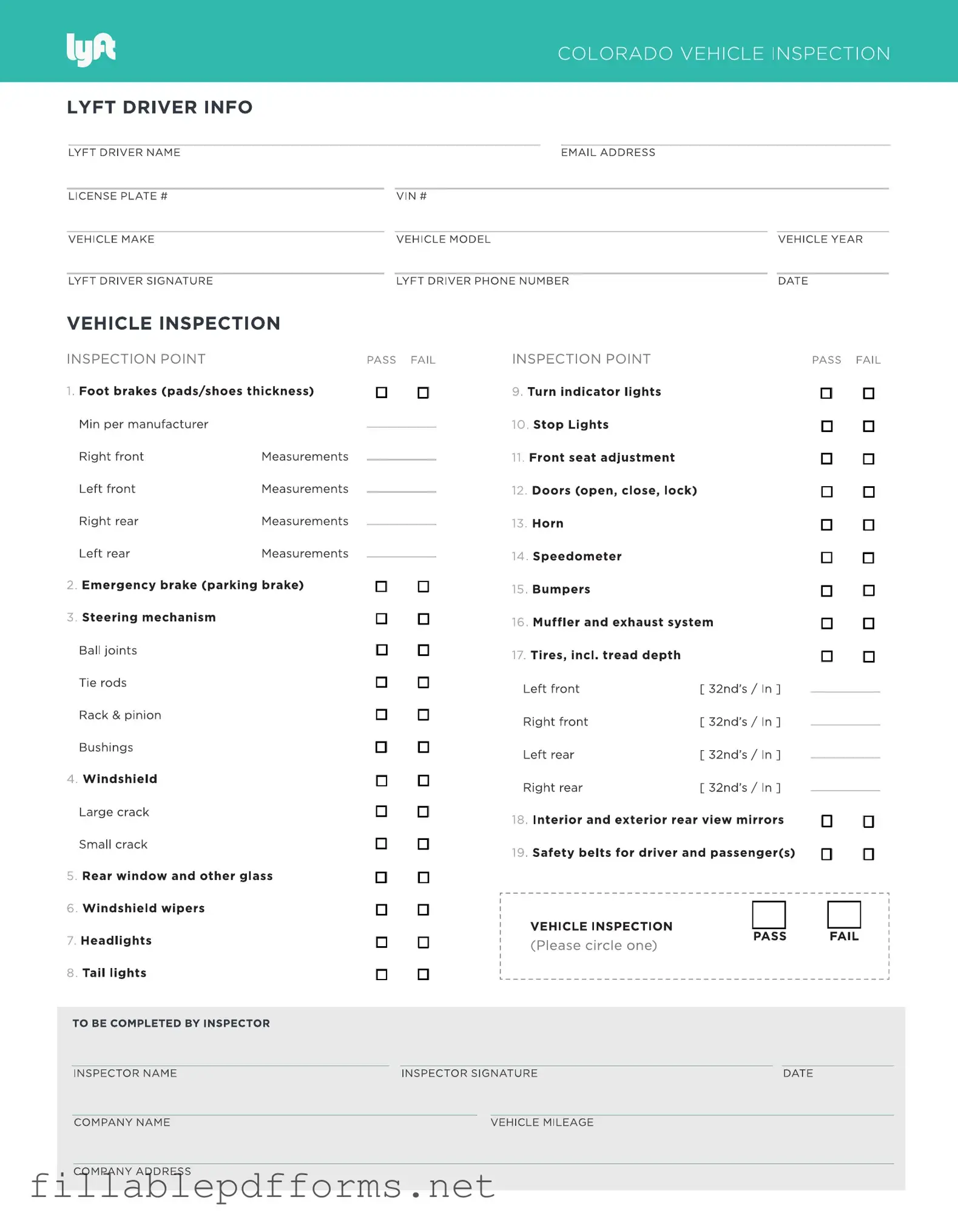Lyft Inspection PDF Template
The Lyft Inspection form is a crucial document that ensures vehicles meet safety and operational standards before they can be used on the platform. This form is designed to protect both drivers and passengers by verifying that the vehicle is in good condition. Understanding the details of this inspection process can help drivers navigate their responsibilities and maintain compliance with Lyft's requirements.
Launch Editor Here
